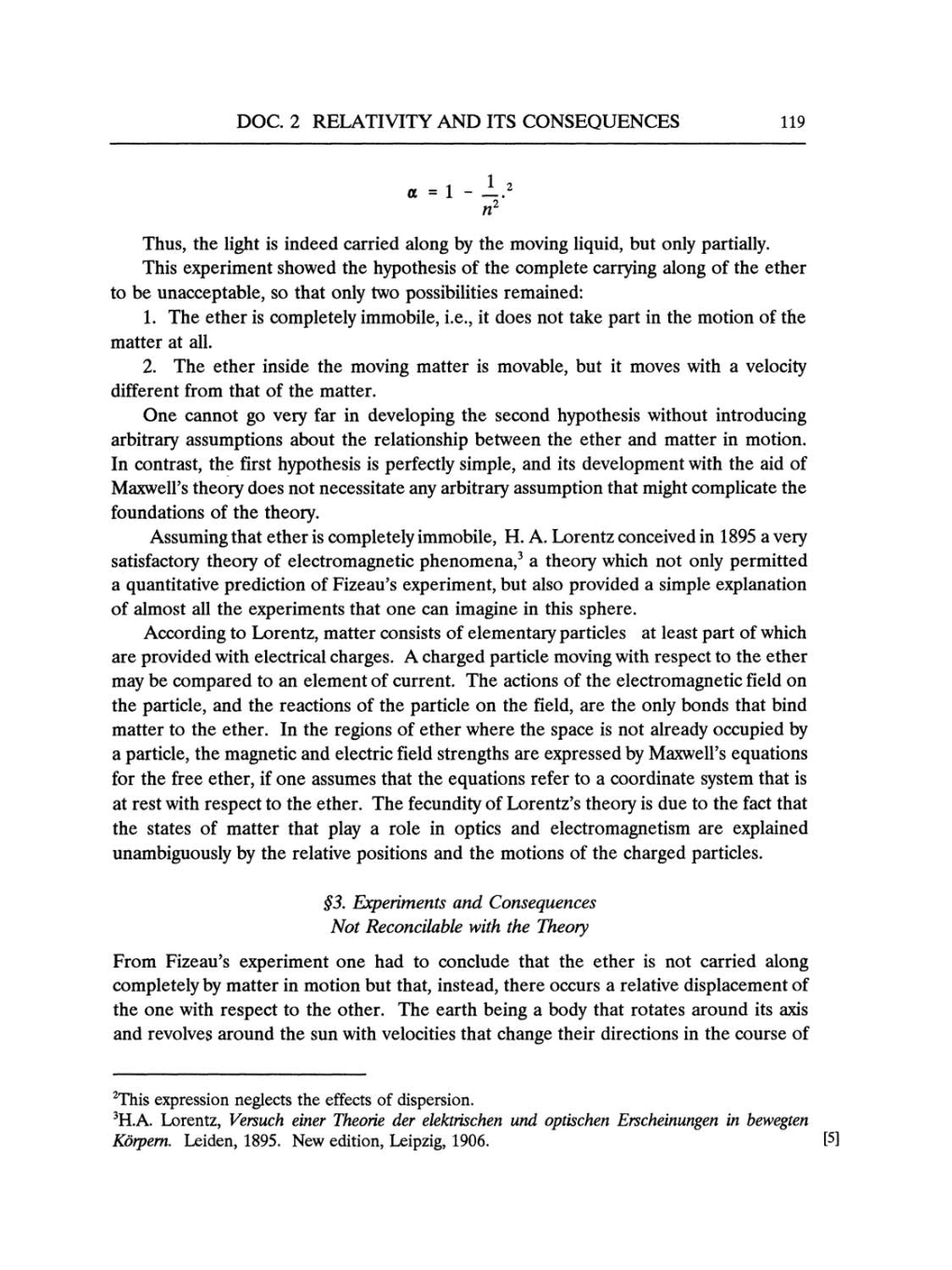DOC.
2
RELATIVITY AND
ITS CONSEQUENCES
119
2
1
fl2
Thus,
the
light
is
indeed carried
along by
the
moving liquid,
but
only partially.
This
experiment
showed
the
hypothesis
of the
complete
carrying along
of the ether
to
be
unacceptable, so
that
only
two
possibilities
remained:
1.
The ether
is
completely immobile, i.e.,
it does not
take
part
in
the motion of the
matter at
all.
2.
The ether
inside
the
moving
matter
is
movable,
but
it
moves
with
a velocity
different
from
that of the
matter.
One
cannot
go very
far
in
developing
the second
hypothesis
without
introducing
arbitrary assumptions
about the
relationship
between the ether
and matter in
motion.
In
contrast,
the
first
hypothesis
is
perfectly
simple,
and
its
development
with
the
aid
of
Maxwell's
theory
does not
necessitate
any
arbitrary assumption
that
might complicate
the
foundations of the
theory.
Assuming
that ether
is completely immobile,
H. A.
Lorentz
conceived
in
1895
a
very
satisfactory
theory
of
electromagnetic
phenomena,3 a
theory
which not
only
permitted
a
quantitative prediction
of Fizeau's
experiment,
but
also
provided
a simple explanation
of
almost all
the
experiments
that
one can imagine
in this
sphere.
According to Lorentz, matter
consists
of
elementary
particles
at
least
part
of
which
are
provided
with
electrical
charges.
A
charged particle
moving
with
respect
to
the ether
may
be
compared
to
an
element of
current.
The
actions
of the
electromagnetic
field
on
the
particle,
and the reactions of the
particle on
the
field, are
the
only
bonds that bind
matter to
the ether. In the
regions
of ether where the
space
is
not
already occupied
by
a
particle,
the
magnetic
and electric
field
strengths
are
expressed
by
Maxwell's
equations
for
the free
ether,
if
one assumes
that the
equations
refer
to
a
coordinate
system
that
is
at rest with
respect
to
the ether. The
fecundity
of Lorentz's
theory
is
due to
the
fact
that
the
states
of
matter
that
play a
role
in
optics
and
electromagnetism
are explained
unambiguously by
the
relative
positions
and
the motions of the
charged particles.
§3. Experiments
and
Consequences
Not
Reconcilable with
the
Theory
From Fizeau's
experiment one
had
to
conclude that the ether
is
not
carried
along
completely
by
matter in
motion but
that, instead,
there
occurs a
relative
displacement
of
the
one
with
respect
to
the other. The earth
being
a
body
that
rotates
around
its
axis
and
revolves
around the
sun
with velocities
that
change
their directions
in
the
course
of
2This
expression neglects
the
effects
of
dispersion.
3H.A. Lorentz,
Versuch einer Theorie der elektrischen und
optischen Erscheinungen
in
bewegten
Körpern.
Leiden,
1895. New
edition,
Leipzig,
1906.
[5]
